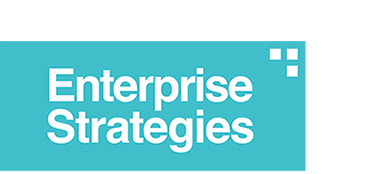
09 Jul Don’t Forget Your Social Roadmap!
Last month, I was in New York City for business meetings. I’ve been to NYC several times before–I love the city, the shopping, and the food! However, I’ve never been able to master the subway. I’m directionally challenged anyway, and the subway continues to be a massive source of confusion and frustration for me. Without the NYC Transit roadmap, I’m helplessly lost. Like everything in life, it is easy to get off track without a guide or plan to your final destination.
Imagine how lost corporations are without the right roadmap to implement enterprise collaboration systems. If your company does not have a roadmap for social business initiatives, everyone will be just as confused as I am in the NYC subway–except there are no opportunities to re-do a major launch of massive transformation initiative. Without a roadmap, you might as well be sitting still or, even worse, going in the wrong direction.
Of course, not all enterprise social roadmaps will look the same. The content and level of detail are going to vary from organization to organization. Regardless of industry differences, they all must be thorough and should include these basic components:
Outline Of Phases
 When doing a full-scale launch of enterprise social collaboration systems, it is essential for all levels of employees to understand the sequence of events that occur before, during, and after the launch or re-launch of social tools. Broad descriptions of phases such as set-up, pre-program, launch phases, etc. allow everyone to stay informed and feel involved in the process, but does not provide overwhelming detail if unnecessary for certain groups in the company.
When doing a full-scale launch of enterprise social collaboration systems, it is essential for all levels of employees to understand the sequence of events that occur before, during, and after the launch or re-launch of social tools. Broad descriptions of phases such as set-up, pre-program, launch phases, etc. allow everyone to stay informed and feel involved in the process, but does not provide overwhelming detail if unnecessary for certain groups in the company.
Key Steps
- General descriptions of phases offer a great high-level overview for the entire organization, but it is also important to break those phases down into achievable, measurable steps for direct stakeholders. Without listing specific steps to be accomplished, it is easy for organizations lose sight of internal collaboration goals. Employees, committees, and departments with major project responsibilities need a detailed outline of tasks to create, complete, or deliver.
Timeline
- Obviously, including times or dates for completion of steps and larger phases is crucial for keeping any social implementation project on task. Roadmaps with detailed timelines help employees put efforts into perspective, give context for progress on goals, and encourage accountability for achieving important initiatives. Of course, timelines need to be flexible and allow for unforeseen problems, but be realistic given organizational abilities.
Milestone Purchases & Investments
 Naturally, purchases and investments could fall under the category of “key steps” in social roadmaps. However, large-scale, expensive purchases of new tools, systems, and processes or even upgrades to existing equipment need to be specifically broken out in the roadmap–mainly because the purchase and implementation process is very complex. Acquiring technology involves numerous stakeholders and therefore should be given significance in any social roadmap.
Naturally, purchases and investments could fall under the category of “key steps” in social roadmaps. However, large-scale, expensive purchases of new tools, systems, and processes or even upgrades to existing equipment need to be specifically broken out in the roadmap–mainly because the purchase and implementation process is very complex. Acquiring technology involves numerous stakeholders and therefore should be given significance in any social roadmap.
Responsible Parties
- As mentioned earlier, the needs of every organization will determine the level of detail for any roadmap. To ensure success, it is always helpful to organize by assigning responsibilities for all tasks to specific individuals or teams. By delegating roles in enterprise social roadmaps, organizations ensure that important steps are not forgotten or ignored–and also promotes engagement by strongly communicating that everyone has key roles to play.
An enterprise social media roadmap is only one component of a larger social business strategy–but an essential one. Without a roadmap, organizations risk wasting considerable time and effort from failed attempts to achieve their business goals and maximize technology investments.
Now, excuse me while I practice my cab-hailing skills.

